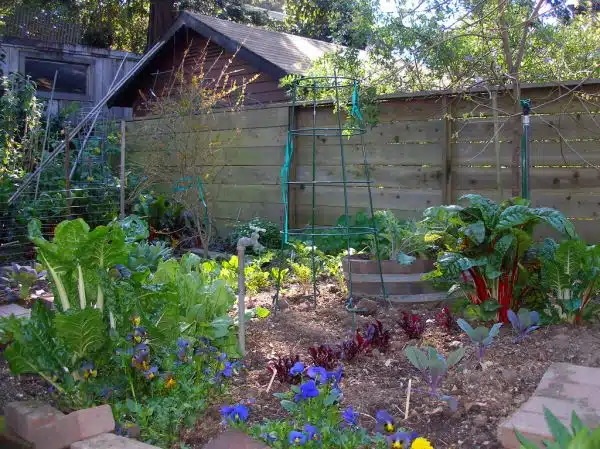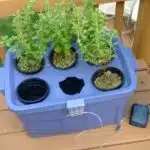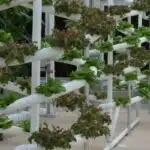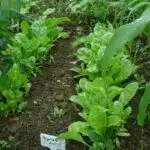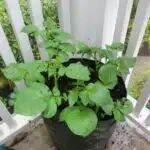As a horticulturalist or soil scientist, understanding soil types for gardening is of utmost importance. Soil serves as a foundation for plant growth and plays a critical role in the overall health and productivity of crops. Knowing the characteristics of different soil types can help gardeners make informed decisions about which plants to grow, how to fertilize, and how to manage water effectively.
Soil can be classified into five main categories: sand, silt, clay, loam, and peat. Each type has its unique characteristics that affect plant growth in various ways. For example, sandy soils are well-draining but have poor water retention capacity whereas clay soils hold onto water well but can be slow to warm up in the spring. Understanding these differences can help gardeners choose appropriate plants for their particular soil type and improve their chances of success in growing healthy crops. In this article, we will delve deeper into each soil type’s properties and how they impact gardening practices to provide readers with a comprehensive understanding of soil types for gardening purposes.
The Importance Of Soil For Plant Growth
The importance of soil for plant growth has been a widely accepted theory in the field of horticulture and soil science. Soil composition plays a crucial role in determining how well plants will grow. It is not just a matter of planting the right seeds or providing enough water and sunlight – without the proper soil, plants cannot absorb the necessary nutrients to thrive.
One key aspect of soil composition is nutrient absorption. Plants require a variety of essential nutrients to grow, including nitrogen, phosphorus, and potassium. These nutrients are absorbed by plants through their root systems, which can only occur if the soil provides an appropriate environment for them to do so. This means that the composition of the soil must be rich in these nutrients and have a pH level that is conducive to plant growth.
In addition to nutrient absorption, other factors such as water retention and drainage also play important roles in determining how well plants will grow. Soil that retains too much water can lead to root rot and other issues, while soil that drains too quickly may not provide enough moisture for plants to absorb. Understanding these various components of soil composition is essential for anyone looking to successfully grow healthy plants.
Moving on from the importance of soil for plant growth, it is now necessary to delve into the basics of soil classification. By understanding different types of soils and their properties, gardeners can make informed decisions about what types of plants will thrive in their specific environments.
The Basics Of Soil Classification
Soil classification is the process of categorizing soils based on their characteristics. It is a vital aspect of gardening as it helps in selecting the right soil type for plants to grow successfully. Soil composition plays a significant role in classifying soils. The main components of soil are minerals, organic matter, water, and air. In addition, soil color, texture, structure, porosity, and acidity levels also influence its classification.
Soil testing techniques are used to determine the soil composition and characteristics accurately. These tests help in understanding the nutrient content and pH levels of the soil. Soil samples are collected from different areas and sent to laboratories for analysis. Based on the test results, gardeners can decide which type of fertilizer or amendments they need to add to their soil to make it suitable for growing specific plants.
The three primary soil classifications include sandy soils, clay soils, and loamy soils. Sandy soils have large particles that do not stick together well and can be easily drained. Clay soils have small particles that stick together tightly and are poorly drained. Loamy soils have a balance between sand, silt, and clay particles that provide good drainage and moisture retention while allowing air to circulate freely.
In preparation for planting a garden bed or lawn area, it is essential to understand the basics of soil classification. By analyzing your soil composition through proper testing techniques like pH testing or nutrient analysis you will be able to identify what type of soil you have on your property so you can make necessary changes accordingly. In the next section we’ll discuss sand soil: its characteristics and uses in gardening practices.
Sand Soil: Characteristics And Uses
As a gardener, you may have heard that sandy soil is the enemy of successful cultivation. However, this could not be further from the truth. Sand soil has its own unique set of characteristics and uses that make it a valuable addition to any garden bed.
One of the most significant features of sandy soil is its excellent drainage properties. The large particle size and minimal organic matter content allow water to move through the soil quickly, preventing waterlogging and root rot in plants. This feature makes sand soil particularly useful for growing drought-tolerant plants that require well-draining soil, such as cacti and succulents.
Another way to improve sandy soils’ fertility is by incorporating sand-based compost into the growing medium. The compost helps increase nutrient content and improve moisture retention, making it easier for plants to thrive in otherwise challenging conditions. With proper care and maintenance, your garden can produce healthy and robust plants with sand soil as a foundation.
Moving on to silt soil: characteristics and uses, we will explore another type of soil that shares some similarities with sand but also has its own unique properties. Silt soils are characterized by their smaller particle size than sand but larger than clay, making them more fertile than both soils. Understanding how silt soils work can help you make informed decisions when planning your garden beds.
Silt Soil: Characteristics And Uses
Sand soil, as we have previously discussed, is one of the most common types of soil found in gardens. However, another type of soil that gardeners should be aware of is silt soil. Silt soils are composed of smaller particles than sand soils but larger particles than clay soils. They tend to be fertile and hold moisture well, which makes them an ideal choice for certain farming practices.
One of the main benefits of silt soil is its ability to retain moisture. This can be especially useful in areas that experience droughts or have limited access to water sources. Additionally, silt soils are generally more fertile than sandy soils, making them a great choice for growing crops such as wheat, corn, and soybeans. However, it’s important to note that too much water can cause silt soil to become compacted and reduce air circulation within the soil.
To prevent erosion on silt soil farms, farmers may use a variety of erosion control measures. These include planting cover crops such as clover or alfalfa to protect the soil from wind and rain erosion. Additionally, terracing or contour farming can help to slow down water runoff and prevent topsoil from washing away. By implementing these practices, farmers can preserve the integrity of their silt soil and ensure that it remains fertile for years to come.
As gardeners continue their exploration into different types of soils for gardening purposes, they should also consider incorporating silt soils into their plans. With proper care and maintenance techniques implemented by farmers through erosion control measures will help ensure that this type of soil remains productive for future generations to come without any negative environmental impacts caused by intensive farming practices. In the next section, we will explore clay soils: characteristics and uses in gardening practices further.
Clay Soil: Characteristics And Uses
Clay soil is a type of soil that contains a high percentage of fine mineral particles, specifically clay particles. It is known for its heavy, dense texture and its ability to hold water for long periods. Clay soils are often found in areas with high rainfall or near bodies of water, such as rivers and lakes.
One of the most common uses of clay soil is in construction. Its ability to hold water makes it an excellent material for creating dams, canals, and other structures that require a waterproof barrier. Additionally, clay soil can be used as a base for roads and buildings due to its high load-bearing capacity.
Despite its suitability for construction purposes, clay soil can present challenges when used in gardening. Its dense texture can make it difficult for plant roots to penetrate the soil and access nutrients. However, there are methods for improving clay soil for gardening purposes. These include adding organic matter such as compost or manure to increase nutrient availability and improve drainage, as well as tilling the soil regularly to break up compacted areas.
- Incorporating sand into clay soil can help improve drainage.
- Adding gypsum can help break up compacted clay.
- Planting cover crops such as clover or rye can help increase organic matter content.
- Raised bed gardening is another option that can work well with clay soils.
Next, we will explore loam soil: characteristics and uses.
Loam Soil: Characteristics And Uses
Clay soil is known for its unique characteristics that make it ideal for specific types of plants. However, not all plants thrive in this type of soil, which is why gardeners and farmers turn to loam soil as an alternative. Loam soil is a combination of sand, silt, and clay in roughly equal parts. This makes it an excellent choice for agriculture and gardening since it provides the right balance of nutrients, moisture retention, and drainage.
One of the primary uses of loam soil in agriculture is for growing crops. The texture of loam soil allows roots to penetrate deeply into the ground while still retaining enough water to keep the plants hydrated. This means that crops grown in loam soil have a better chance of survival during drought periods compared to those planted in other types of soils. Additionally, loam soil can be used for pasture management since it helps control erosion and allows grasses to grow more abundantly.
For gardening purposes, one of the benefits of using loam soil is that it provides a suitable environment for various plant species to grow. Loam soils are nutrient-rich and provide excellent drainage, which helps prevent root rot in plants. Gardeners can use this type of soil to grow vegetables, fruits, flowers, herbs, and shrubs successfully. Moreover, since loam soils are easy to work with and retain moisture well without becoming waterlogged or compacted over time, they are perfect for raised garden beds.
As we have seen above, loam soil has many uses and benefits when it comes to agriculture and gardening alike. It’s no wonder then why this type of soil is so popular among horticulturists worldwide. In the next section, we will delve deeper into peat soils’ characteristics and uses as another viable option for gardeners seeking nutrient-rich alternatives to clay soils.
Peat Soil: Characteristics And Uses
Peat soil is a type of soil consisting of partially decomposed organic matter, formed in wetland environments. It is characterized by its high water holding capacity, low nutrient content and slightly acidic pH. Peat soil is often used in horticulture for its soil conditioning and moisture retention capabilities. It can also be used as a soil amendment to improve drainage, aeration, and water infiltration for lawns and gardens.
Peat Soil Characteristics
Peat soil is a type of soil that is created over a long period of time by the accumulation of partially decomposed plant material. This type of soil has unique characteristics that make it valuable to gardeners and farmers alike. Peat soil is highly acidic with a pH range of 3.5-5.5, making it unsuitable for many plants. However, this acidity can be beneficial for acid-loving plants such as blueberries, azaleas, and rhododendrons.
One significant characteristic of peat soil is its ability to hold water. Due to its high organic content, peat soil has excellent water retention properties. It can hold up to 20 times its weight in water, which makes it an ideal choice for areas with dry climates or for plants that require consistent moisture levels. However, excessive watering can cause peat soil to become waterlogged and lead to root rot.
Peat soil conservation has become an increasingly important topic due to concerns about the environmental impact of harvesting peat bogs. As a result, there are now several alternatives available, such as coconut coir and composted bark, which have similar properties to peat soil. Gardeners should consider using these alternatives instead of peat soil whenever possible to help protect these vital ecosystems and promote sustainable gardening practices.
Peat Soil Uses
Peat soil is a valuable growing medium for various types of plants due to its unique characteristics. One of the primary uses of peat soil is as a soil conditioner or amendment, which can improve soil structure and increase water retention in sandy soils. It can also help to loosen heavy clay soils, making it easier for plant roots to penetrate and access nutrients.
Another popular use of peat soil is as a potting mix for container gardening. Its high water retention capacity and ability to hold nutrients make it an ideal choice for indoor plants and small gardens. However, the environmental impact of harvesting peat bogs has led many gardeners and farmers to search for sustainable alternatives.
Fortunately, several alternatives to peat soil are now available that provide similar benefits without damaging the environment. Coconut coir, composted bark, and other organic materials can be used as substitutes for peat soil in gardening applications. These alternatives not only promote sustainability but also reduce the demand for non-renewable resources like peat moss. As gardeners continue to explore new ways of promoting sustainable practices, using peat soil alternatives will become an increasingly important part of creating healthy and vibrant gardens.
Soil Texture And Structure
Soil texture and structure are important factors to consider when choosing the right soil type for gardening. Soil texture refers to the size of soil particles, which can range from clay (smallest) to sand (largest), with silt being in between. The composition of the soil also plays a role in determining its texture. Sandy soils are composed of larger, coarser particles that allow water to drain quickly, while clay soils have smaller particles and retain more water.
Soil structure is another key factor to consider when it comes to gardening. It refers to the way that soil particles are arranged and held together, creating pore spaces that allow for air and water movement. Soil aggregation is crucial for good soil structure, as it creates larger pore spaces that allow for better root development. This is why adding organic matter like compost or mulch can be beneficial for improving soil structure.
In summary, understanding soil texture and structure is crucial when it comes to selecting the right soil type for gardening. Soil texture determines how well water will drain through the soil, while composition affects nutrient availability. Meanwhile, good soil structure allows for better root development by creating pore spaces that promote air and water movement. In the next section, we will explore how these factors relate to soil pH and nutrient availability, which are also critical considerations when it comes to successful gardening practices.
Soil Ph And Nutrient Availability
The soil’s pH level is a critical factor in determining the availability of essential nutrients for plant growth. Soil pH influences nutrient solubility, which affects the uptake of essential elements by plants. The optimal pH range for most plants is between 6 and 7.5, which allows for the availability of all essential nutrients that plants need to grow.
Soil acidity management plays a crucial role in ensuring proper soil pH levels for optimal plant growth. When the soil is too acidic, it affects the availability of essential plant nutrients such as nitrogen, phosphorus, and potassium. To manage soil acidity, lime can be added to increase soil alkalinity. However, excessive use of lime can lead to an imbalance of soil nutrients that can cause plant nutrient deficiencies.
Plant nutrient deficiencies occur when a particular element is not available in sufficient quantities in the soil to meet the needs of the plant. Common examples include nitrogen deficiency that causes yellowing leaves or stunted growth, phosphorus deficiency that reduces root development and flower production, and potassium deficiency that causes poor fruit quality and susceptibility to disease. Proper understanding of soil types and management techniques can help prevent nutrient deficiencies by ensuring adequate nutrient levels for healthy plant growth.
As we have seen, proper management of soil acidity is crucial for maintaining optimal plant growth conditions as it directly affects nutrient availability in the soil. In the subsequent section, we will explore how soil drainage and water-holding capacity impact plant growth by influencing root development and water uptake capabilities.
Soil Drainage And Water-Holding Capacity
Soil pH and nutrient availability are essential considerations for achieving a bountiful garden. However, soil drainage and water-holding capacity are equally critical factors that determine the health of plants. Drainage pertains to the ability of soils to allow excess water to flow through them easily. On the other hand, water-holding capacity refers to the ability of soils to retain moisture.
To understand how improving drainage and retaining moisture in soils work, think of a sponge. When dry, it is hard and inflexible; but once soaked in water, it becomes soft and pliable. Similarly, when soil is too compact or clay-like, it can lead to poor drainage or waterlogging by retaining too much moisture. Conversely, sandy soils have excellent drainage capabilities but may struggle with retaining enough moisture for plant growth.
Improving drainage in gardens involves various solutions such as creating raised beds or adding organic matter like compost. On the other hand, retaining moisture requires adding organic mulch or using drought-tolerant plants that require less frequent watering. Finding the right balance between soil drainage and moisture retention is crucial for successful gardening. In the next section, we will explore some of the best plants that thrive in sandy soils without sacrificing proper drainage or sufficient moisture retention.
Best Plants For Sandy Soils
Sandy soils are known for their ability to drain water quickly, which can be great for some gardeners. However, this soil type can also be problematic as it lacks the essential nutrients required by most plants. Gardeners who have sandy soils need to prepare the soil well and select plants that thrive in such conditions.
Soil preparation techniques are essential when dealing with sandy soil. It is recommended to work organic matter into the soil before planting. This step helps increase the soil’s fertility and nutrient content, making it more suitable for plant growth. Additionally, adding mulch to sandy soils helps retain moisture and prevent rapid water loss.
Drought tolerant options make up a significant portion of the best plants for sandy soils. These plants have evolved through time to withstand arid conditions that many other plant species cannot tolerate. Examples of drought-tolerant plants include succulents, cacti, lavender, and thyme. These plants require less water than others and are a great choice for gardeners who live in areas with low rainfall or want to conserve water during dry periods.
Transitioning into the subsequent section about ‘best plants for clay soils’, it is important to note that unlike sandy soils, clay soils tend to hold onto water too tightly, making drainage an issue for plant growth. Gardeners dealing with clay soils will need different techniques and plant selections to address these challenges effectively.
Best Plants For Clay Soils
What are the Best Plants for Clay Soils?
As a horticulturalist or soil scientist, it is important to understand the best plants for clay soils. Before we dive into which plants thrive in this type of soil, let’s discuss how to amend clay soil to make it more conducive for gardening. Amending clay soil is crucial since its dense nature can lead to poor drainage and low oxygen levels, inhibiting root growth. Adding organic matter like compost or aged manure can improve soil structure and increase its ability to hold water.
Now that we have discussed clay soil amendment, let’s discuss which vegetables thrive in this type of environment. Root vegetables such as carrots, turnips, and radishes do well in clay soils since they require a firm base for support. Leafy greens like kale and collards also thrive in this type of medium since their roots can penetrate deep into the earth. Other vegetables that do well include beans, peppers, tomatoes and corn.
Transitioning into our next topic on best plants for loam soils, it is important to note that while certain plants prefer specific types of soil, many varieties can adapt to different conditions with proper care and attention. With that said, let’s explore the diverse range of fruits and vegetables that flourish in loam soils.
Best Plants For Loam Soils
Loam soils, with their balanced mix of sand, silt, and clay particles, provide an ideal environment for plants to grow. These soils are rich in nutrients, well-draining, and retain moisture efficiently. As a result, they are suitable for various types of plants that can thrive under different conditions.
In general, plants that do well in loam soils prefer a soil pH range between 6.0 and 7.0. Some examples of annuals that thrive in loamy soil include Marigolds (Tagetes), Zinnias (Zinnia elegans), and Cosmos (Cosmos bipinnatus). Perennials such as Black-eyed Susan (Rudbeckia hirta), Coneflowers (Echinacea purpurea), and Daylilies (Hemerocallis) also prefer loamy soils. Vegetables such as Tomatoes (Solanum lycopersicum), Peppers (Capsicum annuum), and Cucumbers (Cucumis sativus) grow well in loam soils when planted using proper soil preparation and planting techniques.
To ensure successful growth of plants in loam soil, it is essential to prepare the soil adequately before planting. This involves removing any weeds or debris from the planting area and mixing organic matter such as compost or aged manure into the soil to improve its nutrient content. Planting techniques such as spacing the plants properly according to their individual needs and watering them regularly without overwatering will also help ensure optimal growth.
- When preparing your garden bed for planting in loam soil:
- Test the soil pH level before adding fertilizers.
- Add organic matter to improve nutrient availability.
- Till the soil lightly to break up clumps.
- Avoid compacting the soil by not walking on it excessively.
Successful gardening in loam soils depends on proper preparation of the soil and adherence to recommended planting techniques. By selecting plants suitable for these soils, and following the guidelines outlined above, you can achieve healthy and productive plant growth in your garden. Next, we’ll discuss fertilization and soil amendments to help maintain optimal soil health for your plants.
Fertilization And Soil Amendments
Fertilization and Soil Amendments:
Fertilization is an essential aspect of gardening, as it provides plants with the necessary nutrients for optimal growth and development. In addition to traditional synthetic fertilizers, organic amendments such as compost can also be used to improve soil fertility. Composting techniques involve the decomposition of organic matter into a nutrient-rich soil amendment that can be added to garden beds or used as a potting mix.
Organic amendments are favored by many gardeners due to their environmentally friendly properties and ability to improve soil structure. In contrast, inorganic amendments such as chemical fertilizers may have negative impacts on the environment if overused or not applied correctly. While both types of amendments can provide essential nutrients to plants, it is important to consider the long-term effects on soil health and environmental sustainability.
Overall, incorporating composting techniques and using organic amendments can contribute to healthy soil ecosystems and promote optimal plant growth. By selecting appropriate fertilization methods based on individual garden needs and considering the impact on soil health, gardeners can create thriving gardens while minimizing environmental harm. In the next section, we will explore strategies for managing soil for optimal plant growth.
Managing Soil For Optimal Plant Growth
Optimizing soil for healthy plant growth is crucial for gardening success. Soil testing is the first step in managing soil for optimal plant growth. A comprehensive soil test will reveal the existing nutrient levels, pH balance, and organic matter content of the soil.
With this information, gardeners can develop a tailored plan to improve their soil’s health. Soil preparation techniques such as tilling, composting, and mulching can be used to adjust the nutrient levels and increase organic matter content. Amending the soil with fertilizers and other supplements can also help create optimal growing conditions.
By managing their soil effectively, gardeners can ensure that their plants thrive and produce an abundant harvest. With proper soil testing and preparation techniques, gardeners can achieve a healthy, vibrant garden that will give back to them season after season.
Conclusion
Soil is a critical factor for plant growth and must be carefully managed to ensure optimal conditions for plants. Understanding the different soil types and their characteristics is essential for successful gardening. Soil can be classified into three basic types based on its texture: sand, silt, and clay.
Sand soil has larger particles that allow for good drainage but can lead to nutrient deficiencies. Silt soil has smaller particles than sand but larger than clay, allowing it to hold onto water and nutrients while still providing adequate drainage. Clay soil has the smallest particles of the three types, which make it dense and heavy but also capable of retaining water and nutrients.
It’s important to choose plants that are suited to the type of soil in your garden. For example, plants that thrive in clay soils include hostas, daylilies, and coneflowers, while those that do well in loam soils include tomatoes, peppers, and cucumbers. Fertilization and soil amendments can also help improve soil quality.
In conclusion, understanding the different types of soils is essential for successful gardening. By selecting appropriate plants for specific soil types and managing soil through fertilization and amendments, gardeners can create optimal growing conditions for their plants. Remember that healthy soil equals healthy plants!
Image Credits
- “Backyard Vegetable Garden” by Laura K Gibb (featured)

